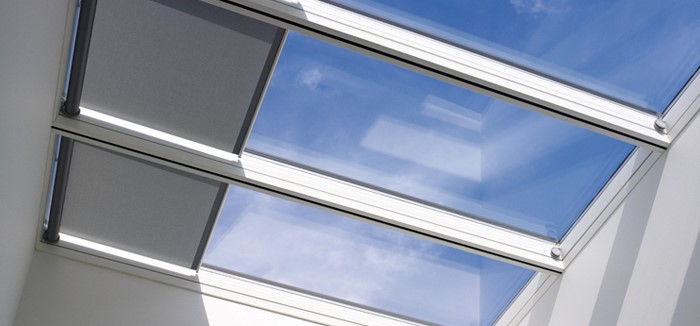Aspects of daylighting design covered by EN 17037
Contents |
[edit] Introduction
EN 17037 Daylight in buildings was published at the end of 2018 and is the first unified standard, applicable Europe-wide, that deals exclusively with the design for and provision of daylight within commercial buildings and residential dwellings.
It comprises four distinct areas:
- Daylight provision.
- Assessment of view out of windows.
- Access to sunlight.
- Prevention of glare.
Whilst designers may have familiarity with designing to provide daylight into commercial buildings, the other three aspects of EN 17037 significantly extend the scope of daylight design. This article presents an overview of all four areas that EN 17037 covers.
[edit] Daylight provision
Adequate daylight provision allows users to carry out tasks and plays a part in determining the likelihood for the need of artificial lighting at certain times of the day. Climate-based modelling or daylight factor calculations can be used for the assessment of daylight provision within buildings.
[edit] Assessment of view out of windows
EN 17037 considers the width and outside distance of the view, as well as landscape ‘layers’ (sky, landscape and ground) that a window offers building users. The overall view to be provided should be clear, undistorted and neutrally coloured. The width of view can be determined via either a detailed or simplified approach. The outside distance and number of layers, however, are each measured by a single approach.
[edit] Access to sunlight
Calculating the access, or exposure, to sunlight is a health and comfort factor for users of residences, nurseries and hospital wards. The daily sunlight exposure can be determined through detailed calculations or via table values.
[edit] Prevention of glare
Prevention of glare is concerned with eliminating the chances of glare for building users. This is especially important for those who do not choose where they sit within their environment. It is determined using a comprehensive daylight glare probability (DGP) calculation or using a standard table of values for sun-screening materials.
[edit] How the provision of daylighting design is measured
To offer flexibility for designers and architects whilst also making the standard useable and understandable, EN 17037 sets a mandatory minimum level of performance for each of the four areas of daylighting design.
The standard also gives two additional performance levels: medium and high. Users of EN 17037 are free to select the performance level that best suits the building design and proposed building’s utilisation. Both a simplified and detailed method is offered to assess each design area.
Visit the VELUX Commercial website for further guidance on EN 17037.
See also:
VELUX Commercial specialise in offering a range of daylight solutions for any commercial building project. Contact us for more information or to find out how our rooflights can improve daylighting on your next development.
[edit] Related articles on Designing Buildings Wiki
- Artificial lighting.
- Daylight.
- Daylight factor.
- Daylit space.
- Designing daylight solutions for commercial buildings.
- EN 17037 Daylight in buildings.
- Glare.
- Health and wellbeing impacts of natural and artificial lighting.
- Lighting.
- Lighting and health infographic.
- Lighting designer.
- Lighting and offices.
- Rooflights.
- Site layout planning for daylight and sunlight.
- Solar gain.
- Types of building EN 17037 applies to.
- Types of lighting.
- Windows.
Featured articles and news
The Building Safety Forum at the Installershow 2025
With speakers confirmed for 24 June as part of Building Safety Week.
The UK’s largest air pollution campaign.
Future Homes Standard, now includes solar, but what else?
Will the new standard, due to in the Autumn, go far enough in terms of performance ?
BSRIA Briefing: Cleaner Air, Better tomorrow
A look back at issues relating to inside and outside air quality, discussed during the BSRIA briefing in 2023.
Restoring Abbotsford's hothouse
Bringing the writer Walter Scott's garden to life.
Reflections on the spending review with CIAT.
Retired firefighter cycles world to raise Grenfell funds
Leaving on 14 June 2025 Stephen will raise money for youth and schools through the Grenfell Foundation.
Key points for construction at a glance with industry reactions.
Functionality, visibility and sustainability
The simpler approach to specification.
Architects, architecture, buildings, and inspiration in film
The close ties between makers and the movies, with our long list of suggested viewing.
SELECT three-point plan for action issued to MSPs
Call for Scottish regulation, green skills and recognition of electrotechnical industry as part of a manifesto for Scottish Parliamentary elections.
UCEM becomes the University of the Built Environment
Major milestone in its 106-year history, follows recent merger with London School of Architecture (LSE).
Professional practical experience for Architects in training
The long process to transform the nature of education and professional practical experience in the Architecture profession following recent reports.
A people-first approach to retrofit
Moving away from the destructive paradigm of fabric-first.
International Electrician Day, 10 June 2025
Celebrating the role of electrical engineers from André-Marie Amperè, today and for the future.
New guide for clients launched at Houses of Parliament
'There has never been a more important time for clients to step up and ...ask the right questions'
The impact of recycled slate tiles
Innovation across the decades.
EPC changes for existing buildings
Changes and their context as the new RdSAP methodology comes into use from 15 June.



























